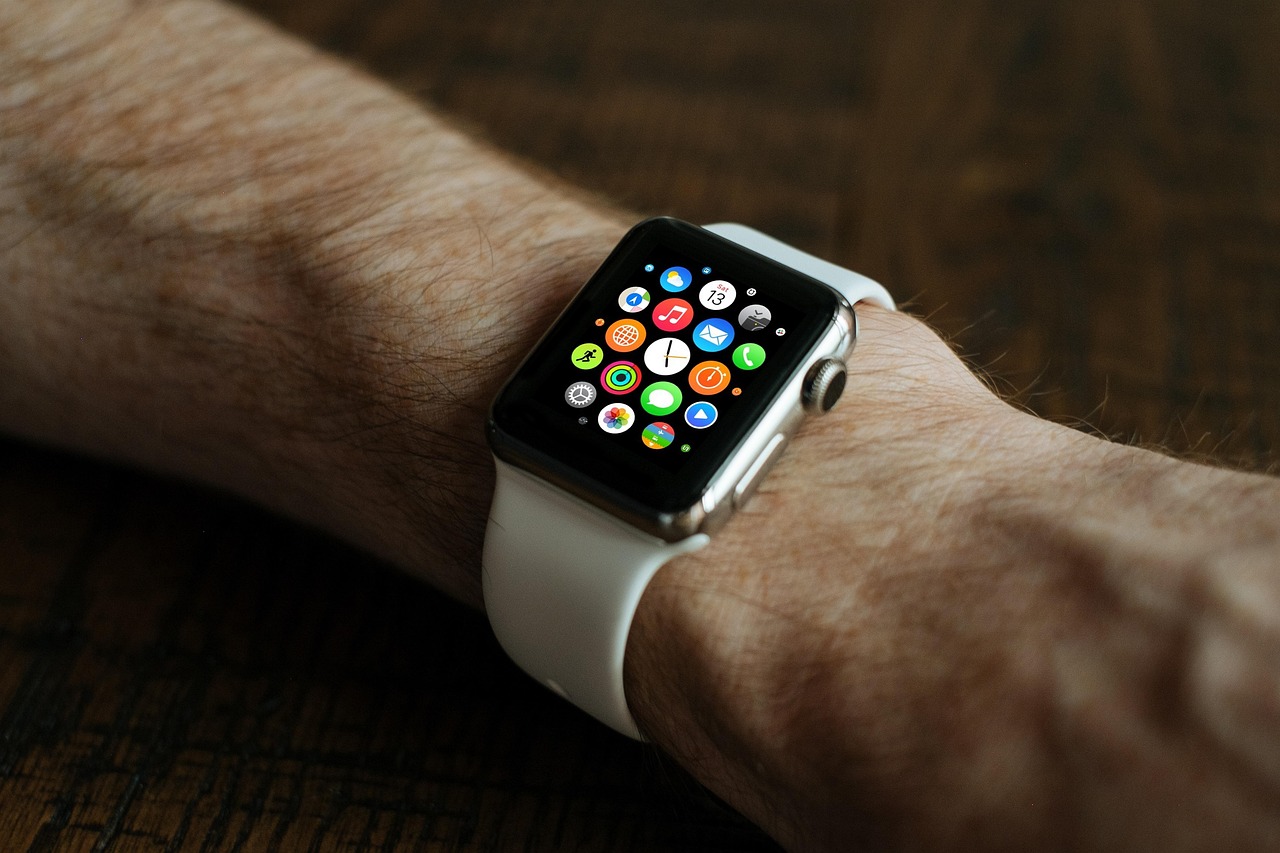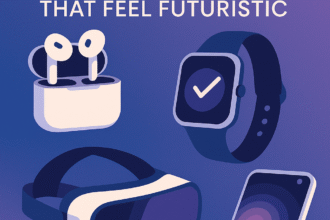Over the past decade, wearable technology has evolved from a niche gadget trend into a mainstream cornerstone of modern life. Once limited to step counters and basic fitness bands, wearables now track heart rhythms, monitor sleep, detect early signs of illness, and even serve as gateways into the metaverse. As we enter 2025, the question is no longer whether wearables are useful—it’s how far they will go in reshaping our health, productivity, and everyday experiences.
The future of wearable tech in 2025 is being shaped by three major forces: smarter devices, deeper health integration, and groundbreaking innovations like implantables. From stylish smartwatches to sensors inside the human body, the landscape is changing faster than most people realize.
The State of Wearables in 2025
Market Growth and Adoption
The global wearable technology market is booming, valued at over $150 billion in 2024 and projected to grow at a CAGR of 12% through 2030 [Grand View Research]. Smartwatches and fitness trackers still dominate, but categories like smart clothing, AR glasses, and medical-grade wearables are expanding rapidly.
What was once a convenience has become essential: 1 in 3 adults in developed markets now owns at least one wearable device, with health and wellness features driving adoption.
Mainstream Applications
- Smartwatches are the new norm, integrating contactless payments, AI assistants, and advanced health sensors.
- Earbuds now double as biometric trackers, monitoring heart rate, oxygen levels, and even stress.
- Smart glasses are becoming more common, providing AR overlays for work, travel, and entertainment.
Smartwatches: The Everyday Health Companion
Beyond Steps and Calories
Smartwatches in 2025 are no longer just fitness trackers. Devices like the Apple Watch Series 10 and Samsung Galaxy Watch 7 are equipped with continuous glucose monitoring, blood pressure tracking, and advanced ECGs.
They’re essentially mini health hubs on your wrist, capable of detecting irregular heart rhythms, monitoring hydration, and alerting users to potential illness before symptoms appear.
AI-Powered Personal Coaching
Thanks to on-device AI, smartwatches can now analyze data patterns and provide proactive recommendations. For example, if your watch detects increased stress and poor sleep, it might suggest a mindfulness exercise or automatically adjust your alarm for optimal rest.
Smart Clothing and Biometric Fabrics
Another growing frontier is smart textiles—clothing embedded with sensors that monitor performance, posture, and vital signs. In 2025, brands like Under Armour and Hexoskin are pushing wearable fabrics into sports, healthcare, and even workplace safety.
Examples include:
- Shirts that track respiratory rate and heart activity.
- Yoga pants that provide real-time feedback on posture.
- Hospital gowns with built-in sensors to track patient recovery remotely.
Augmented Reality Glasses: The Next Smartphone?
While AR glasses haven’t fully replaced smartphones, they are steadily gaining traction. Apple, Meta, and smaller innovators are working toward lightweight, fashionable designs that provide:
- Navigation overlays while walking or driving.
- Hands-free productivity tools, like transcription or translation in real time.
- Immersive entertainment experiences, blurring lines between physical and digital worlds.
If the smartphone was the icon of the 2010s, AR glasses may define the late 2020s.
Health-Tracking Implants: The Next Frontier
From Wearables to “Inside-ables”
Perhaps the boldest development in 2025 is the rise of health-tracking implants. Instead of strapping devices to our bodies, the next step is integrating them inside.
Companies are experimenting with:
- Glucose-monitoring implants for diabetics.
- Cardiac implants that detect arrhythmias and send alerts to doctors.
- Neural implants that help track neurological conditions or even improve cognitive performance.
Benefits and Challenges
The potential is enormous: continuous, accurate health data that could save lives by detecting diseases earlier. But ethical, privacy, and security concerns are equally significant. Who owns the data inside your body? How do we ensure implants cannot be hacked?
The answers to these questions will shape not only technology but also the future of medical ethics.
Privacy and Security Concerns
As wearables become more intimate—tracking our biometrics, emotions, and even brain signals—privacy becomes a central concern. In 2025, regulations like Europe’s GDPR for health data are tightening oversight, but consumer trust remains fragile.
A 2024 Pew Research survey found that 62% of users worry about how their wearable data is shared, even as they embrace the benefits. Striking the balance between utility and privacy will define the industry’s future.
The Road Ahead: What’s Next After 2025?
The trajectory of wearable tech suggests that by 2030, we may see:
- Fully integrated ecosystems where wearables, AR glasses, and implants work seamlessly together.
- Preventive healthcare systems, where doctors monitor patients remotely and intervene before illness escalates.
- Blended realities, where digital experiences overlay the physical world constantly through glasses or contact lenses.
In other words, wearables may not remain “accessories.” They could become core extensions of human capability.
Key Takeaways
- Smartwatches in 2025 serve as advanced health hubs, offering medical-grade monitoring and AI-driven insights.
- Smart clothing and biometric fabrics are expanding into sports, healthcare, and workplace applications.
- AR glasses are becoming more mainstream, hinting at a post-smartphone future.
- Health-tracking implants represent the bold next step, but raise major ethical and privacy debates.
- The future of wearable tech is not just about devices—it’s about integrating seamlessly with human life.








